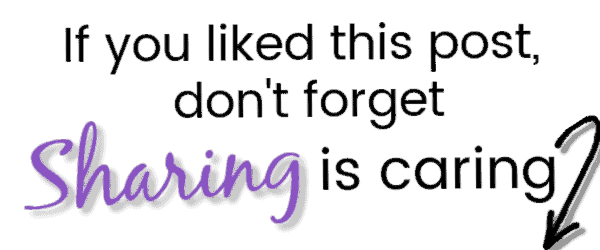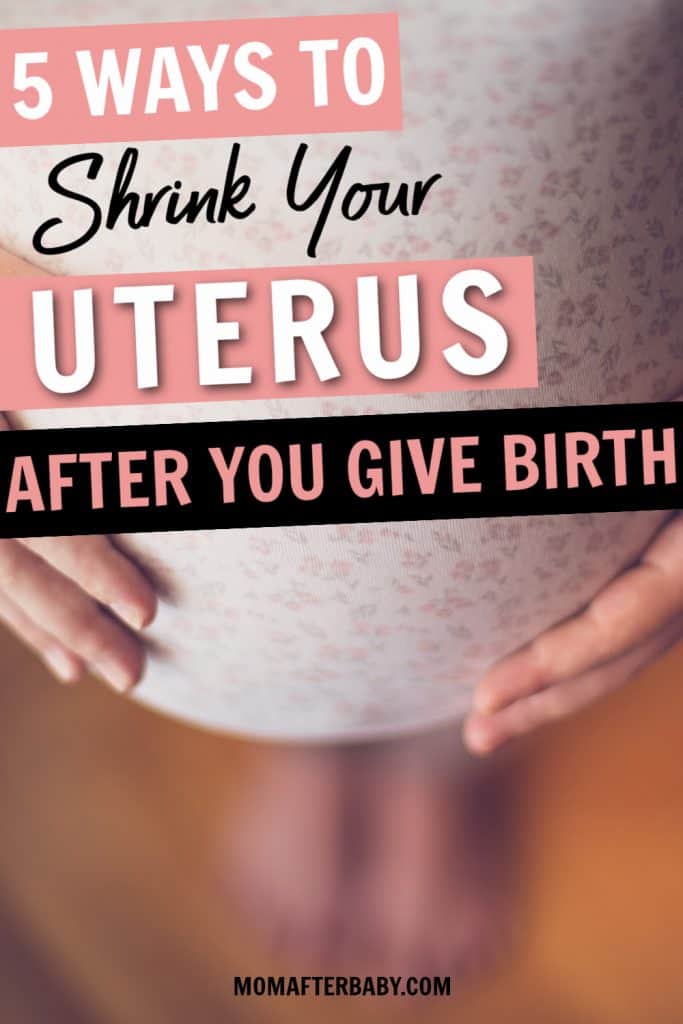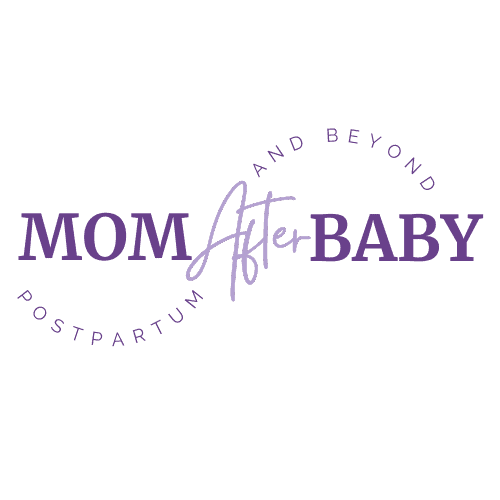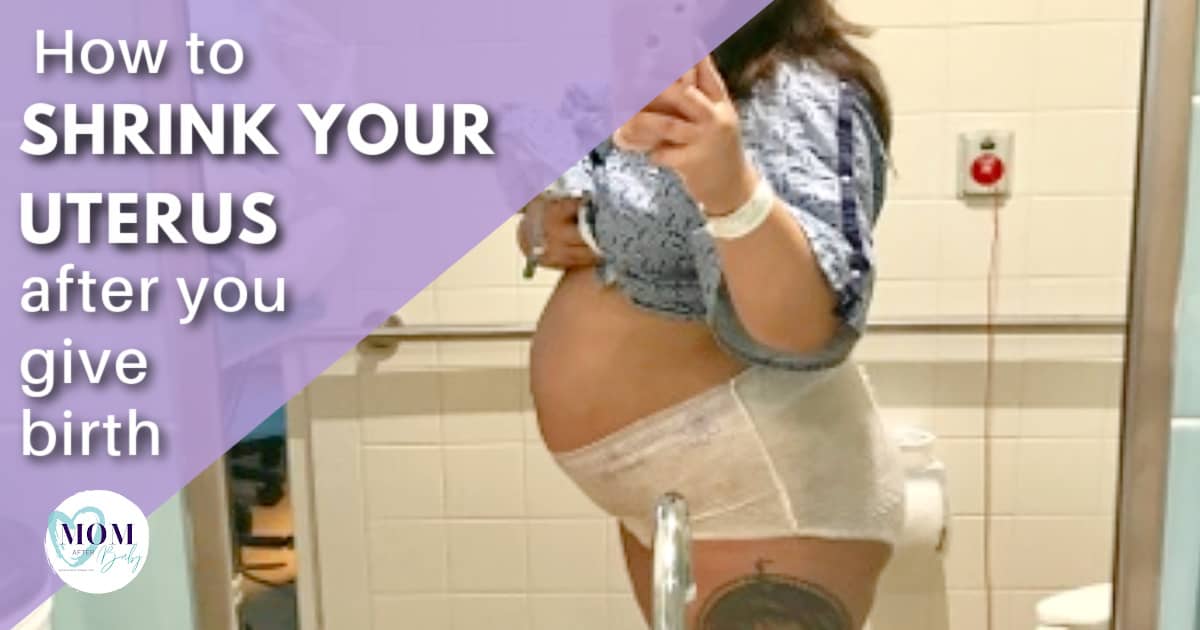How to shrink your uterus after you give birth
This post may contain affiliate links that I may receive a commission from if you click & buy. In addition, the information on this site is NOT intended to be medical advice. See my full policy for more information.
Shrinking your uterus after birth isn’t strange, it’s normal! However, many new moms don’t even realize how large their uterus actually grew throughout pregnancy. So in this article, we will discuss how to shrink your uterus after you give birth!
Did you know a woman’s uterus will grow to be the size of a watermelon during her pregnancy? Neat, huh!
This is why many mothers have that “I still look pregnant” appearance even after they’ve given birth. Think of it this way: it’s taken you months to stretch and grow your uterus right? So, you shouldn’t expect it to shrink down within a day or two.
However, in an effort to help your uterus shrink back down, here are a few ways to help you shrink your uterus after birth!
How to shrink your uterus after you give birth (ways to help your uterus shrink)
One thing to understand is that shrinking your uterus is NOT so you can “get your pre-baby body back”. In fact, it really isn’t for any aesthetic reason at all.
And if you’re wondering how to shrink your uterus naturally, well, ALL the tips in this post are natural!
In fact, one of the main reasons to encourage contractions to shrink your uterus is to ensure it returns to its normal size, heals appropriately, and minimizes the chance of any postpartum hemorrhaging.
The last thing ANY mother needs is for her birth experience to be followed by postpartum hemorrhaging (though, it can happen).
As long as you arm yourself with as much knowledge around how your uterus functions and what you can do to help it heal after birth, you’re on the right path already!
1. Wear a postpartum belly binder or abdomen girdle
If you’re not sure what a postpartum belly binder is (also called a postpartum girdle or post-pregnancy girdle), it’s a compression garment that wraps around your abdomen specifically after a woman gives birth.

Some of the many benefits of using a postpartum girdle after pregnancy includes:
- Increasing blood flow
- Compression (to provide stability and help uterus shrink)
- Minimize back and hip pain
- Support for your recovering pelvic floor muscles
- Helps to reduce swealling and fluid retention (especially important for c-section mothers)
Be sure you’re not living in your post-pregnancy girdle though. Your body will need some time without the girdle as it recovers as well.
If you’ve had a c-section, you can check out these cesarean belly binders specific for recovering c-section mothers.
Read More: Planning For Postpartum Has Never Been Easier, Here’s How!
2. Encourage contractions through breastfeeding
If you aren’t planning or decided to use baby formula instead, this won’t be too helpful.
However, if you are breastfeeding or planning to breastfeed, I have some fun (and kind of uncomfortable) news.
Breastfeeding is actually known to help your uterus shrink through contractions!
Ever wonder why some moms will attempt to pump to try and induce labor? Yup, it’s to stimulate those contractions (the same contractions that will help your uterus get smaller after birth).
Here’s how it happens. Breastfeeding (more so the nipple stimulation) triggers oxytocin to be released in the body. Oxytocin causes all your smooth muscles and uterus to contract. These contractions typically feel like mild to moderate menstrual cramps and are often called “after pains”.
In addition to helping your postpartum uterus shrink, these same contractions help to prevent hemorrhage and postpartum bleeding by putting lots of pressure on the blood vessels in the area the placenta was attached. So although these contractions can be a pain (literally speaking), they play a very important role in your postpartum recovery.
3. Try a fundal massage
A fundal massage is a very uncomfortable massage commonly performed after birth to stimulate contractions to help your uterus shrink and to prevent postpartum hemorrhaging.
Fundal massages are NOT relaxing and can be incredibly uncomfortable.
These massages are almost always performed by your OB/GYN, Labor and Delivery RN, or Midwife.
Though you won’t be able to give yourself a true fundal massage at home, you can do things such as:
- Gently applying pressure directly ontop of your uterus with a slow circular massaging motion for 1-2 minutes **DO NOT PRESS HARD DIRECTLY INTO YOUR UTERUS**
- Wear a compression girdle to apply constant compression
- Apply a warm compress (these ones are great for postpartum) and place your hands on top to apply slight compression
Read More: The BEST Postpartum Underwear: Helping Moms Feel Confident After Birth
4. Practice some breathing techniques
If you haven’t noticed the commonality between all of these tips, they all in some way end up providing compression to your uterus one way or another. Breathing is also similar.
However, this breathing technique is called, diaphragmatic breathing. It’s much different than just taking a regular ol’ breath.
Diaphragmatic breathing is also called belly breathing and it has a lot of benefits outside of helping your belly shrink. These benefits include:
- Lowering your heart rate and blood pressure
- Strengthens your pelvic floor
- Minimized risk of injury during exercise
- And much more!
So, how do you actually perform diaphragmatic breathing? Here’s how:
- Lie on your back with your knees bent or sit up in a chair.
- Place one hand on your chest and another hand just below your ribcage (or on your belly).
- Begin a slow inhale — feeling your stomach rise and expand with the air against your hand. Menwhile, your chest shouldn’t move at all.
- Then, as you prepare to exhale, think of drawing your belly towards your back. You may feel your muscles lightly contracting too.
Written instructions can be a bit confusing for those who have never practiced this technique before. This video from the trainer and creator of Juna Moms does a great job of demonstrating what it should look like:
If you found this video helpful, be sure to check out the actual Juna Mom App — with over 200+ follow-along workouts created by pre and postnatal experts, in addition to delicious nutrition tips, step-by-step diaphragmatic breathing exercises, and so much more!
5. Make your pelvic floor rehabilitation a priority
Many times after a woman gives birth, she will continue on through her postpartum recovery not paying any attention to rehabilitating her pelvic floor muscles.
You might be wondering, what are pelvic floor muscles?
Well, this muscle group makes up the ‘floor’ of your pelvic floor. It lays out like a hammock from the pubic bone to the tailbone, providing support for the uterus, bladder, and colon.
Why is pelvic floor muscles important??
Your pelvic floor muscles do a lot more than just offer support to your pelvic organs. They also help you control your bladder and bowel. If you’ve ever experienced the casual urine leaking associated with a sneeze or cough — that’s a direct reflection of some pelvic floor muscles needing a little TLC.
Women can also suffer more severe issues from not prioritizing their pelvic floor’s rehabilitation too, such as:
- Pelvic organ prolapse (which you can read all about here)
- Uncomfortable back pains
- Difficulty contracting your uterus back to normal (considering it doesn’t hav the support it needs)
- Passing gas more frequently
- Painful or uncomfortable intercourse
The takeaway? Don’t skip out on rehabilitating your overworked pelvic floor muscles after pregnancy. They’re pretty important.
Read More: Postpartum Herbal Bath — How Sitz Baths Can Soothe Your Postpartum Healing!
Why is my uterus NOT shrinking?
Let’s say you’ve tried every single way to encourage uterine contractions after birth and they’re just not working.
The key thing to know here is that your uterus should begin shrinking (and contracting) immediately after birth. It typically takes around 6 to 8 weeks before it fully contracts back down to its normal size.
If you’re in the birthing center, at home with your midwife, or in a hospital when they notice your uterus is not shrinking or contracting, your care team should intervene immediately as you could be experiencing a condition known as atony of the uterus.
Signs that your uterus is NOT contracting after birth include:
- heavy bleeding after birth
- severe pain around your uterus
- decreased blood pressure
- an elevated heart rate
- and sometimes other uncommon symptoms
Once your care team is able to stimulate those contractions and control the bleeding (or even if you didn’t have any complications at all), you should pay close attention to the way your uterus looks and feels during the weeks of recovery.
If you’re concerned that your uterus is not shrinking after pregnancy or you still look pregnant after the two-month mark, speak to your doctor or your local pelvic floor physiotherapist.
Get more tips & connect:




